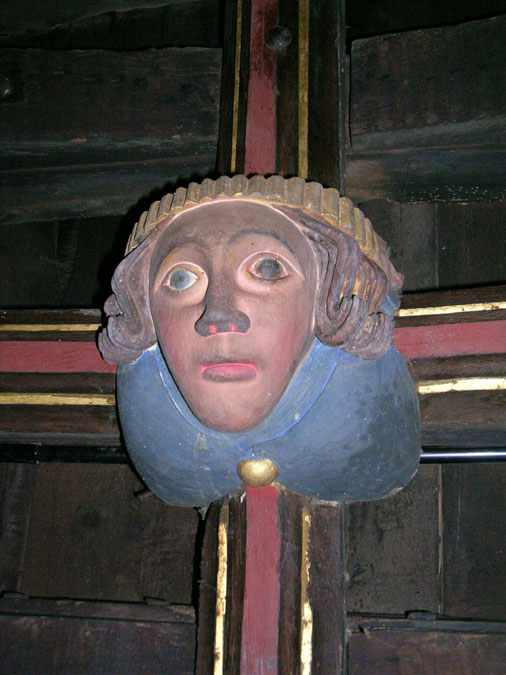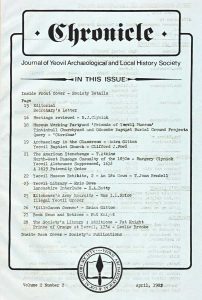This article came from the Chronicle
Volume 2(2) published April 1982. Page 23-25
LANCASHIRE INTERLUDE
Author: E.A.Batty
During the last twenty years or thereabouts my personal ties with the north-west and Lancashire in particular have strengthened steadily. Lancashire suffered severely in the so-called ‘re-organization’ of English counties, part being detached to form the new county of Merseyside and part hived off to join with Cumbria, though since the county terrain varies widely from mountainous to flat coastal plain, there is perhaps a certain logic in this. Concurrently with the change Lancashire’s cloth-capped image has faded. ‘Trouble at t’mill’ is a thing of the past, mainly because the cotton industry has suffered catastrophic decline. ‘Down South’ Blackpool and ‘Coronation Street’. now symbolize Lancashire to the exclusion of the beauties of the fell country and its grey stone villages, the glories of the Trough of Rowland and the wealth of history enshrined in cities and small towns alike.
Above the junction of the River Ribble with its tributaries the Hodder and the Calder stands Stonyhurst, the great Jesuit college founded at St Omer in the times of persecution and transferred here through the generosity of the Welds of Lulworth in Dorset in 1794. Under the guidance of the Father Rector, my wife and I were privaleged to tour the magnificent library and museum of the college. Here is a 7c copy in uncial Latin of St John’s Gospel found in the tomb of St.Cuthbert, an illuminated MS of Froissart’s Chronicles and examples of the work of Caxton and Wynkyn de Worde. To me the most fascinating of all was a little book of Hours with ‘Maria Regina’ on the cover-title and this Mary Queen of Scots carried to her execution. For a moment as I held the precious volume in my hands I was back in that dreadful day in 1587 when poor Mary met her fate in gloomy Fotheringay. After this St Thomas More’s Great Seal and cape were something of an anticlimax.
The well-known Roman site at Ribchester is an archaeological delight, but others are better qualified than I to describe the treasures we found there. More interesting to a student of the Reformation era are the numerous traces of that robust Catholicism of the north which gave Elizabeth I and her successors so much trouble. In many an old house a priest continued to say Mass for the family and neighbours right through the days of persecution, retreating to his ‘hide’ when the hunt was on. One such was Edmund. Arrowsmith, and our interest in this martyr for his beliefs was first aroused by a chance visit to the remarkable 20c Catholic church of St Oswald at Ashton-in-Makerfield. Here the eye is drawn to a silver casket set in a niche behind beautiful wrought-iron gates. The casket encloses what Arthur Mee calls ‘a grim but sacred relic’, to wit, the hand of the martyr. What manner of man was this, who as a child saw his parents imprisoned for their beliefs and was himself smuggled by a kindly priest to Douai, where he was ordained for the perilous work of the English Mission? So, one sunny morning in May we resolved to follow in his footsteps to the humble abode in Brindle’s Gregson Lane where he said the last Mass before his trial and execution. The discovery of an altar stone, chalice and vestments, suggest a room on the first floor was indeed the Mass centre and it is said that at intervals a light in the shape of a cross appears high up on one of the walls, remains for a while, and then disappears (we did not see this phenomenon). The story is that one day in 1628 Mass was just over when word, was brought that the poursuivants were abroad. The faithful hurriedly dispersed, but Edmund set out on horseback across the adjoining fields. The horse, however, refused to jump the gully known as Moss Ditch and Edmund was at the mercy of his pursuers. Condemned at Lancaster Castle by a ‘judge’ without a proper trial, he was dragged on a hurdle to the place of execution, where, says a contemporary account, he ‘died a most edifying death’. No doubt for a suitable reward, the executioner permitted a friend or relative to bear away the severed limb.
Chingle Hill at Goosenargh near Preston is one of the most haunted houses in Britain, not excepting Borley Rectory. The Hall has no fewer than three ‘hides’, all constructed by the celebrated Nicholas Owen. In the grounds of the Hall, is buried the head of St John Wall, born here in 1620, and martyred at Worcester. His spirit permeates every room, and every kind of psychic phenomenon has occurred here. Many of these are vouched for by the Society for Psychic Research, and others by an Anglican bishop. Mysterious knockings are heard from inside the priest’s ‘hides’, objects are projected into space, figures in clerical attire appear then melt into solid masonry, and footsteps are heard mounting the stairs and dragging heavy objects. Visitors are warned they may experience sudden deathly chills and I had personal experience of this, becoming first patchily cold and then freezing to the marrow. There is, however, general agreement that the spirits are not malevolent. Chingle hall has been featured more than once on television and is open to visitors most days of the week. No explanation of the ‘happenings’ is offered, just a factual account of events.
Not all our expeditions, however, were close encounters-with the super-natural. Rufford Old Hall, in the village of Rufford, is a brick and timber building now in the care of the National Trust and of personal interest since the folk museum it incorporates was arranged by the late Sidney Paviere of Preston Museums and well-known to me. Rufford was the home of the North-country Heskeths for 400 years till 1936, when rebuilding disclosed a chamber (wait for it!) thought to be a priest’s ‘hide. The Principal glory of Rufford is the vast Tudor banquetting hall with a hammer-beam roof borne on carved angels holding shields. In a timbered archway at one end of the hall is a superb panelled screen. The village of Rufford itself, with its stocks and medieval parish church with the Hesketh brasses made this visit perhaps the most rewarding of all.

